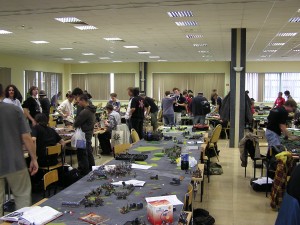 “Maybe Marissa (Mayer, the Yahoo CEO) was right,” a client mused to me this week as he showed me his new office.
“Maybe Marissa (Mayer, the Yahoo CEO) was right,” a client mused to me this week as he showed me his new office.
A former two-day-a-week telecommuter, my client has recently joined another tech company. This one requests that all of its employees work at one of its offices.
It’s okay to work at home occasionally—unlike Yahoo’s current practice. Last February, Yahoo CEO Marissa Mayer ordered that all employees return to the office to work side-by-side each other.
If you remember, it was a controversial move on a number of levels. The way CEO Mayer and Executive Vice President of People and Development Jackie Reses handled the announcement seemed awkward and insensitive, which I wrote about in Avoid ‘’taser’’ asks to get others to act.
Yet, communication and collaboration—which are especially important for Yahoo, my client’s new employer and countless other organizations—are often easier when individuals are physically present in the same locations.
As the infamous Yahoo memo stated, “Some of the best decisions and insights come from hallway and cafeteria discussions, meeting new people, and impromptu team meetings.”
The neuroscience research, as I’m learning in my Executive Masters in Neuroleadership Program, supports togetherness.
We humans understand each other through our feelings, not just our thoughts. Furthermore, we can figure out others’ intentions and emotions by observing their facial expressions and body language, and hearing their voices.
For example, when a co-worker grimaces after being assigned a new demanding deadline in a meeting, we can feel their pain. Or, when another co-worker smiles after being commended for a job well done, we can feel their pleasure. We subconsciously place ourselves in their shoes and we understand and recall their same emotions. We may even mirror our team members’ facial expressions and body positions, which shows them that we “get” what they’re experiencing.
In these situations, our brain’s “mirror neurons” are firing. Cells in specific regions of our brain activate whether we’re performing a task, or observing others perform the same task. Mirror neurons also fire around feelings.
We’re not conscious of how our mirror neurons automatically interpret situations for us.
Thanks to the research though, we now know that these mirror neurons contribute to our ability to socialize and empathize with our co-workers, friends, family, strangers and anybody else we encounter.
For mirror neurons to activate, we need to see others or hear their voices. The mirror neurons are quiet when we’re emailing, texting, instant-messaging or otherwise working by ourselves in a home office. So while we may be digitally connected with our co-workers during these periods, we aren’t emotionally connected. So unless you score really high on empathy, you won’t be as understanding of others’ situations and feelings.
The big learning for my client and me?
Take advantage of being around your co-workers. And if you tend to work in a small or home office, build face time and phone time in your daily work schedule. If you lead a virtual team, encourage team members to talk on the phone and do video conferencing between team meetings.
These richer interactions lead to better and deeper understanding, which contribute to better collaboration.
Here’s to togetherness!
What are you doing to promote togetherness?

0 Comments